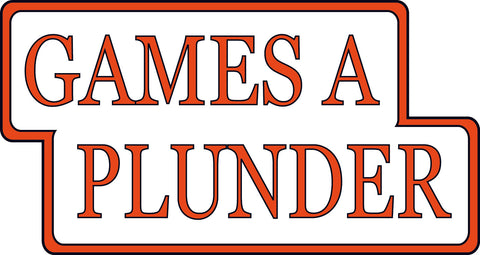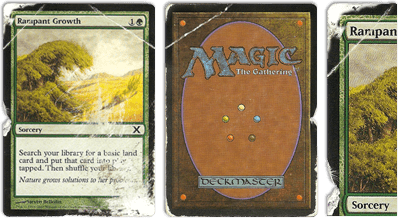Sega Genesis With 32x Adapter And Sega CD

This Console Is Available For Store Pick Up Only, There Is No Shipping Available.
Pre-Owned Console Comes With
- Sega Genesis Controller
- All Required Cables
Sega Genesis
The Sega Genesis, known as the Mega Drive in most regions outside North America, is a 16-bit home video game console which was developed and sold by Sega Enterprises, Ltd. The Genesis was Sega's third console and the successor to the Master System. Sega first released the console as the Mega Drive in Japan in 1988, followed by a North American debut under the Genesis moniker in 1989. In 1990, the console was distributed as the Mega Drive by Virgin Mastertronic in Europe, by Ozisoft in Australasia, and by Tec Toy in Brazil. In South Korea, the systems were distributed by Samsung and were known as the Super Gam*Boy, and later the Super Aladdin Boy. <br />The main microprocessor of the Genesis is a 16/32-bit Motorola 68000 CPU clocked at 7.6 MHz. The console also includes a Zilog Z80 sub-processor, which was mainly used to control the sound hardware and also provides backwards compatibility with the Master System.
.
.
Sega 32x
The Sega 32X is an add-on for the Sega Genesis video game console. Codenamed "Project Mars", the 32X was designed to expand the power of the Genesis and serve as a transitional console into the 32-bit era until the release of the Sega Saturn. Independent of the Genesis, the 32X uses its own ROM cartridges and has its own library of games. The add-on was distributed under the name Super 32X (????32X?) in Japan, Sega Genesis 32X in North America, Sega Mega Drive 32X in the PAL region, and Sega Mega 32X in Brazil. <br /> <br />Unveiled by Sega at June 1994's Consumer Electronics Show, the 32X was presented as a low-cost option for consumers looking to play 32-bit games. Developed in response to the Atari Jaguar and concerns that the Saturn would not make it to market by the end of 1994, the product was first conceived as an entirely new console. At the suggestion of Sega of America executive Joe Miller and his team, the console was converted into an add-on to the existing Genesis and made more powerful. The final design contained two 32-bit central processing unit chips and a 3D graphics processor. To bring the new add-on to market by its scheduled release date of November 1994, development of the new system and its games were rushed. The console failed to attract third-party video game developers and consumers because of the announcement of the Sega Saturn's simultaneous release in Japan. Sega's efforts to rush the 32X to market cut into available time for game development, resulting in a weak library of forty titles that could not fully utilize the add-on's hardware, including Genesis ports. By the end of 1994, the 32X had sold 665,000 units. After price reductions in 1995, it was discontinued in 1996 as Sega turned its focus to the Saturn. <br /> <br />The 32X is considered a commercial failure. Reception after the add-on's unveiling and launch was positive, highlighting the low price of the system and power expansion to the Genesis. Later reviews, both contemporary and retrospective, for the 32X have been mostly negative because of its shallow game library, poor market timing and the resulting market fragmentation for the Genesis.
.
.
Sega CD
The Sega CD, released as the Mega-CD in most regions outside North America, is a CD-ROM accessory for the Sega Genesis video game console designed and produced by Sega as part of the fourth generation of video game consoles. The add-on was released on December 12, 1991 in Japan, October 15, 1992 in North America, and 1993 in Europe. The Sega CD lets the user play CD-based games and adds extra hardware functionality, such as a faster central processing unit and graphic enhancements. It can also play audio CDs and CD+G discs. <br /> <br />Seeking to create an add-on device for the Genesis, Sega developed the unit to read compact discs as its storage medium. The main benefit of CD technology was greater storage capacity, which allowed for games to be nearly 320 times larger than their Genesis cartridge counterparts. This benefit manifested in the form of full motion video (FMV) games like the controversial Night Trap, which became a focus of the 1993 Congressional hearings on issues of video game violence and ratings. Sega of Japan partnered with JVC to design the add-on and refused to consult with Sega of America until the project was completed. Sega of America assembled parts from various "dummy" units to obtain a working prototype. While the add-on became known for several well-received games such as Sonic the Hedgehog CD and Lunar: Eternal Blue, its game library contained a large number of Genesis ports and FMV titles. The Sega CD was redesigned a number of times, including once by Sega and several times by licensed third-party developers. <br /> <br />By the end of 1994, the add-on had sold approximately 2.7 million units worldwide, compared to 29 million units for the Genesis sold by that time. In 1995, Sega began shifting its focus towards its new console, the Sega Saturn, over the Genesis and Sega CD. The Sega CD was officially discontinued in 1996. Retrospective reception to the add-on is mixed, praising the Sega CD for its individual offerings and additions to the Genesis' functions, but offering criticism to the game library for its depth issues, high price of the unit, and how the add-on was supported by Sega.
.
.
We have a 30-day return policy for all Brand New Items, which means you have 30 days after receiving your item to request a return.
We have a 30-day replacement policy for all Pre-Owned Items, which means you have 30 days after receiving your item to have any malfunctioning part replaced with another of the same item.
To be eligible for a return of a Brand New Item, your item must be in the same condition that you received it, unworn or unused, and in its original packaging. You’ll also need the receipt or proof of purchase.
To start a return, you can contact us by calling the store at (518) 823-4471. If your return is accepted, we can either send you a return shipping label to your email address used for the purchase, as well as instructions on how and where to send your package, we will deduct the cost of the return shipping label from your final return value. Alternatively, you can use your own shipping method to return the items. Any items sent back to us without first requesting a return will not be accepted.
You can always contact us for any return question by calling the store at (518) 823-4471.
Damages and issues
Please inspect your order upon reception and contact us immediately if the item is defective, damaged or if you receive the wrong item, so that we can evaluate the issue and make it right.
Exceptions / non-returnable items
Certain types of items cannot be returned, like perishable goods (such as food, flowers, or plants), custom products (such as special orders or personalized items), and personal care goods (such as beauty products). We also do not accept returns for hazardous materials, flammable liquids, or gases. Please get in touch if you have questions or concerns about your specific item.
Unfortunately, we cannot accept returns on sale items or gift cards.
Refunds
We will notify you once we’ve received and inspected your return, and let you know if the refund was approved or not. If approved, you’ll be automatically refunded on your original payment method. Please remember it can take some time for your bank or credit card company to process and post the refund too.










 '
' '
' '
' '
' '
'